 November/December 2017 issue |
|
A
Vision for Regional Trail Planning Wednesday, November 8, 2017, 7:30 p.m. Bonny Doon School Multipurpose Room, Pine Flat Road & Ice Cream Grade |
A
Vision for Regional Trail Planning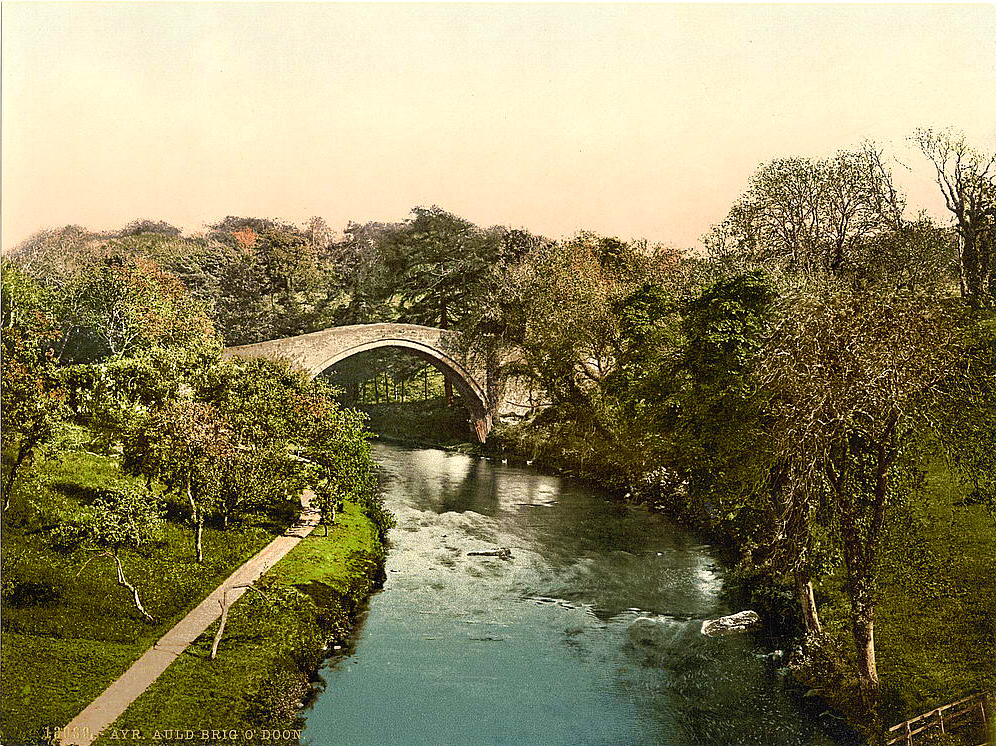 Matt De Young is the Executive Director of Mountain Bikers of Santa Cruz (MBOSC). MBOSC is a non-profit organization focused on trail advocacy and stewardship. MBOSC has performed over 20,000 hours of volunteer trail work on our local trails since 2012, and has invested over $1,000,000 in local trail development, construction and maintenance. Matt’s work with the organization began shortly after he moved to Santa Cruz in 2012 as a volunteer on the Emma McCrary Trail in Pogonip. Since then, he has employed his expertise in sustainable trail design, construction, and maintenance on many MBOSC trail projects in Pogonip, DeLaveaga Park, Wilder Ranch State Park, and the Soquel Demonstration Forest. In addition to managing MBOSC’s trail stewardship projects, he oversees MBOSC’s advocacy and education initiatives. Matt will be talking to our community about MBOSC’s stewardship work, the state of mountain biking locally, and opportunities for regional trail planning that could benefit all trail users. Read his contributed article in this edition of the HIGHLANDER for an overview of his vision for regional trail planning. Local Trail Advocacy Group Hopes to Improve Trail Connectivity This is an invited contribution to the Highlander by Matt De Young, the Executive Director of Mountain Bikers of Santa Cruz. The opinions stated below are that of the author and not of the RBDA Executive Board. Come to the meeting on November 8 at Bonny Doon Elementary at 7:30 p.m. to hear more about Matt’s vision for our shared resources. The local non-profit trail building and advocacy group, Mountain Bikers of Santa Cruz (MBOSC), has been working within the community to explore concepts for a regional trail planning process. With the myriad of local land use planning efforts currently taking place or soon to be undertaken in the County, including San Vicente Redwoods, Cotoni-Coast Dairies, UCSC’s LRDP, the City of Santa Cruz’s Parks Master Plan, and Santa Cruz County’s Strategic Parks Plan, it is a great time to think about regional connectivity. MBOSC has been working closely with the Santa Cruz County Horsemen’s Association and the Monterey Bay Equestrians on outreach with local land managers and other stakeholders to build support for this initiative. A similar effort was undertaken in the early 1990’s at the behest of the Santa Cruz County Parks and Recreation commission. A draft County trails plan was produced but never adopted by the Board of Supervisors because of political pressure from private property interests who opposed the idea of a regional trail system. With the increase of new public access opportunities on the horizon, it is time to revisit the idea of a regional trail network. MBOSC envisions an interconnected trail network that would provide all trail users the opportunity to travel between parks on a network of sanctioned trails. Imagine hiking, horseback riding, or cycling from the City of Santa Cruz through Wilder Ranch, up to San Vicente Redwoods, into Big Basin or down into Cotoni-Coast Dairies National Monument and returning to Santa Cruz on the Rail Trail. MBOSC sees this as an opportunity to better integrate mountain biking into our local recreation landscape. Of the 220 miles of sanctioned single-track trails in Santa Cruz County, fewer than 40 miles of trail are open to mountain bikes. This imbalance of trail access has led to many issues with user conflict and illegal trail construction. MBOSC believes that reviewing our trail networks with a regional focus will provide an opportunity to further legitimize and manage mountain bike use, which would reduce the impacts that have resulted from its marginalization. To learn more about Mountain Bikers of Santa Cruz, visit www.mbosc.org or email MBOSC at info@mbosc.org. Celebrating 60 years in Style! 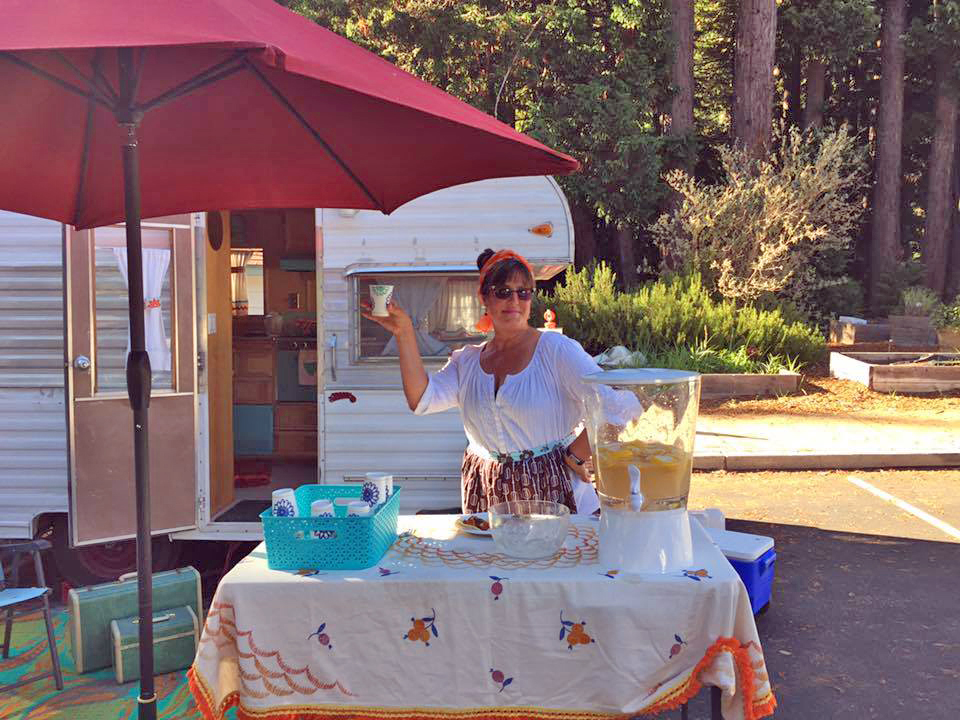 The RBDA celebrated its 60th Anniversary in style at the Bonny Doon Elementary School on September 17. Everyone enjoyed scrumptious G’s Tacos (sponsored by the RBDA for $1/taco), free lemonade served from Jennifer Joslin’s 60’s vintage trailer, and Doon-themed cake! There was terrific old timey music from our local Dooners, Rachel Goodman, Steve Coulter and Greg Meyer. Wonderful (and often hilarious) stories were shared by longtime Dooners and former RBDA board members. Supervisor Ryan Coonerty read a proclamation honoring the work of the RBDA. We had a fun table set up for the kids with lots of crafty activities, hoola hoops and more. Thanks to Kendra Turk-Kubo who organized this great play date for MINI-DOONERS! We wanted to create an event where everyone in the community was welcome, and we plan to hold such events more frequently in the future. We love an opportunity to get us all together and celebrate our beautiful mountain community! Thanks to all who showed up, and thank you to all the folks who volunteered to help make the event a great success! Draft Environmental Impact Report for Commercial Cannabis Cultivation Falls Short  As many of you probably recall, the November 2015 RBDA General meeting hosted then Supervisor-Elect Ryan Coonerty, and Sheriff-Elect Jim Hart, along with Valerie Corral of Wo/Men’s Alliance for Medical Marijuana (WAMM) to speak to the concerns we had with the proliferation of illegal cannabis grows in our neighborhoods. Since then, a lot has happened on this front including, of course, the state initiative to allow use of the drug for recreational purposes. This summer, our County Board of Supervisors passed an ordinance that would put some reasonable restrictions on commercial cultivation. The ordinance included a 5-acre minimum lot size in residential neighborhoods (zoned R or RA), with reasonable setbacks from schools and parks, and a complete ban on commercial cannabis cultivation in the coastal zone plus 1 mile in the Bonny Doon area. Implementation of this ordinance requires an environmental impact analysis, as the commercial cultivation of this drug, particularly in or near residential neighborhoods, is a significant land use change that could have an impact on anyone living near a grow site. Furthermore, there are major concerns for the possible environmental impacts of the commercial cultivation, as well as the increased fire hazards we have witnessed that are associated with some of the sites growing and/or processing the drug. Coalition for Environmental Santa Cruz (CESC), an organization the RBDA strongly supports, was formed earlier this summer to address the community’s concerns surrounding the pending release of the cannabis cultivation ordinance (more information on CESC is available at www.cesc2017.wordpress.com). CESC provided extensive comments that should be addressed by the Environmental Impact Report (EIR) when public comments were initially solicited, and the organization is currently working on their comments to the Draft Environmental Impact Report (DEIR). Comments to the DEIR were due to be submitted prior to the end of October. CESC’s initial summary of the contents of the DEIR is that it fell short of the expected protections for the environment, public safety and the community values it was supposed to consider. One of the primary premises of the DEIR is that a more permissive application of the cannabis cultivation ordinance will result in more growers coming into compliance with the regulations, resulting in a better overall outcome. One example of this relaxation of the proposed ordinance would reduce the 5-acre minimum in residential neighborhoods to 2.5 acres, and increase the amount of a permitted grow. An analogy to this way of proceeding might be that if we were to raise the speed limit on our highways to 80 miles an hour, more drivers would be in compliance to the law, therefore we would all be safer! Are You Interested in Becoming an RBDA Board Member?  Help Us Keep Bonny Doon Rural and Natural At our General meeting on November 8, we will open nominations for positions on the RBDA Executive Board, and the election will be held at the January 10th General RBDA meeting. We are currently short by one member on the board, so if you’re a current member of the RBDA, and would like an opportunity to provide service to your community, please consider giving it a try. If you have questions about this, you can call or text Tom Hearn at 278-0145. Board positions are not particularly taxing on your personal time, and it’s a great way to meet more of your neighbors. The current Executive Board is trying to reinvent a portion of how the RBDA operates. The recent 60th “RBDA Birthday Party” is an example of how we would like to provide more fun opportunities for the community, along with maintaining the mission of the organization to keep Bonny Doon Rural and Natural. What is the County Doing to Ease the Local Housing Crisis? 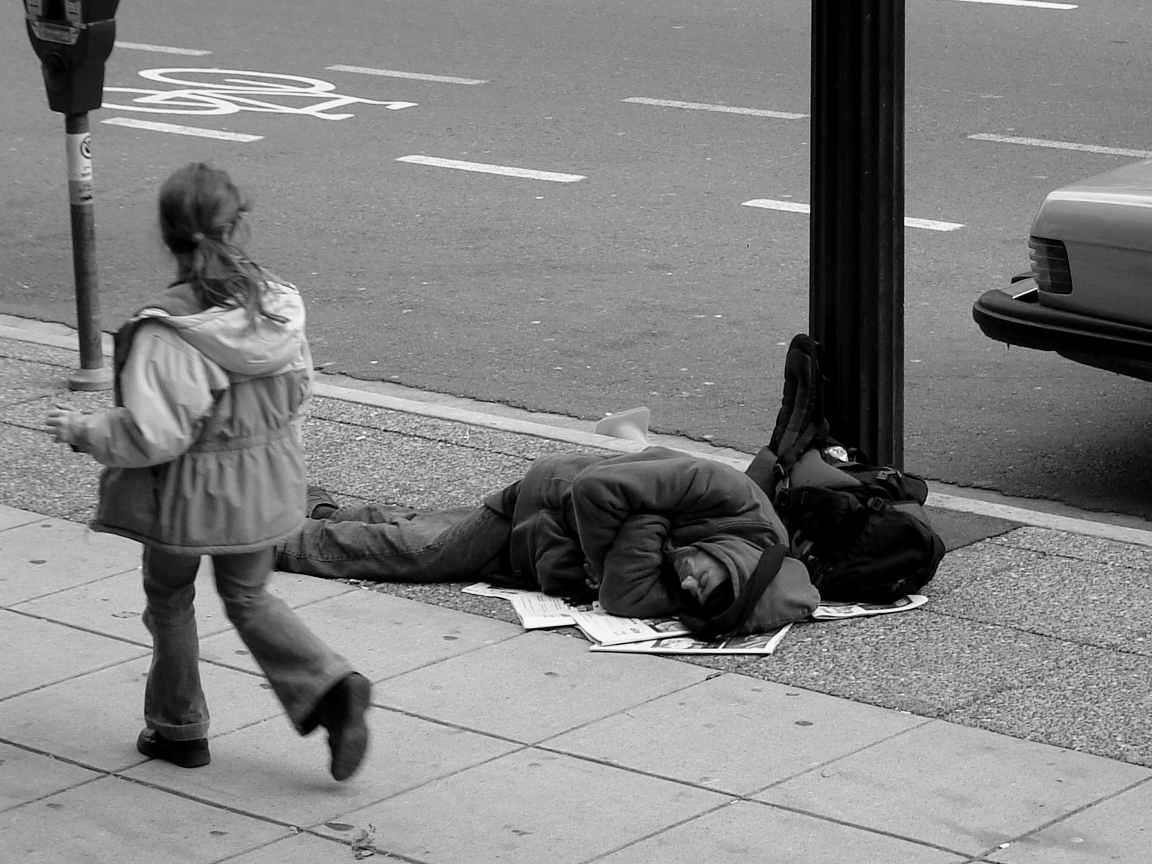 This is an invited contribution to the Highlander by Ryan Coonerty, our Third District Supervisor for Santa Cruz County. The opinions stated below are that of the author and not of the RBDA Executive Board. However, the RBDA is very interested in receiving feedback from our community about this issue. Do you feel that Bonny Doon will be positively or negatively impacted by more permissive requirements regarding Accessory Dwelling Units (ADUs)? Please share your opinions with us by contacting any of the Board members, or e-mail the RBDA board at board@rbda.us. In the midst of California’s housing crisis, the State Legislature and local governments are looking at policy changes to ease the housing shortage and encourage more affordable housing choices. As your County Supervisor, I have taken a multi-pronged approach to this complex issue by supporting sensible regulations on vacation rentals, opposing unmitigated University growth, and instituting a fee on market-rate development to support new affordable units. Policy makers at the state and local level have also identified Accessory Dwelling Units (ADUs) as another way to help ease the housing shortage. ADUs, also known as granny units, are dwellings that can be built next to houses on your parcel, in or over garages, or converted from a non-habitable structure on the property. Because ADUs are generally smaller than single family dwellings, they are often more affordable to rent and can be perfect for a family member or caregiver. There have been a number of changes at the state level that the County has been mandated to adopt, and some local initiatives that the Board of Supervisors has supported. For a comprehensive understanding of all of the changes, I encourage you to go to the County’s Planning Department website (http://www.sccoplanning.com) and click on “Accessory Dwelling Unit Study”. You will find both a detailed explanation and a summary of the state and local changes to the rules regarding ADUs. In short, the new state standards, which the Board is required to adopt, remove some of the barriers to building ADUs by revising parking requirements, deleting the requirement for fire sprinklers in some cases, and recognizing conversions of existing structures into ADUs. Locally, I spearheaded an initiative at the Board to facilitate ADUs that will be available to low income renters. The program will subsidize up to $40,000 of the cost of developing an ADU if the owner agrees to rent the unit to a low-income household at an affordable rent. I asked that the County seed this effort with $300,000, which was supported unanimously by the Board. In addition to the County’s low-income ADU subsidy program, I have supported a Habitat for Humanity program at the Board that seeks to develop additional ADUs and help low-income senior homeowners by incentivizing the construction of ADUs on the property of low-income seniors. The program is designed to provide additional rental stock and also to provide income to help these low-income seniors age in place. While I am supportive of many of the changes that encourage ADUs to provide more affordable housing options, I also recognize that these efforts will be for naught if we also do not check University growth, the proliferation of second homes, and support funding for affordable projects for our working families. Community Advisory Group Hopes to Influence New UCSC Growth 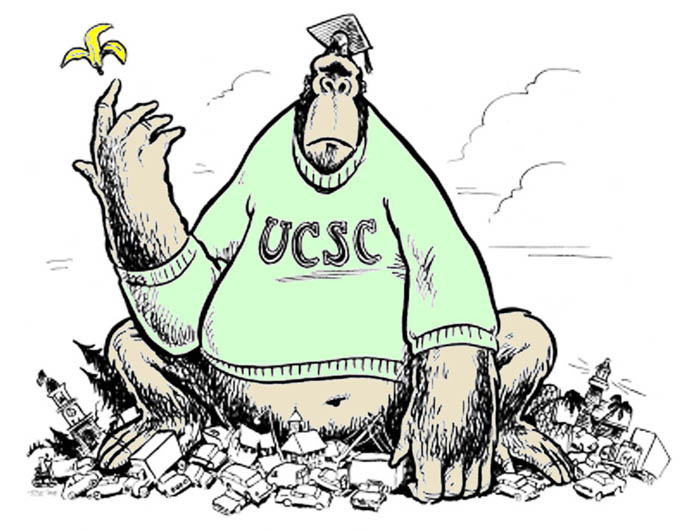 On November 17, the community will have its first chance to see what UC Santa Cruz has in mind for its new Long Range Development Plan (LRDP), and to give some feedback. The date will mark the first of five scheduled meetings over seven months for the UC Santa Cruz Community Advisory Group (CAG). The University invited local government ruling bodies, community and business groups to sit on the CAG, writing in a letter to its members: “The Community Advisory Group is intended to provide a broad spectrum of viewpoints. The purpose of this group is to provide some additional community input and perspective on some key topics. Your feedback will then help inform the LRDP Planning Committee in its efforts going forward.” We believe this is the first time in UCSC’s 50-year history that it has solicited this kind of input from the community prior to making its growth plan. It reflects the progress that has been made in “town-gown” relations since the lawsuits of the mid-2000s, which resulted in the Comprehensive Settlement Agreement, and UCSC’s acknowledgment that it needed to play a bigger role in mitigating its ever-growing impact on the community. The RBDA Board will have a representative on the CAG (former RBDA board chair Ted Benhari), and the Coalition for Limiting University Expansion (CLUE) will have two representatives, John Aird and Gary Patton. “I hope that we will be able to have some meaningful influence on the University’s growth and its impacts on Bonny Doon, in particular,” Benhari says, “but state law gives us very little leverage, and there’s always the chance that the CAG will just be a foil used by the Regents and the Office of the University President for its own purposes.” Are You Prepared for Wildfires?  The
recent fires in the Santa Cruz Mountains serve as a
good reminder that the smallest spark can create a
fire, and the best thing we can do as a community is
to be informed about what to do when threatened by
wildfire. The California Department of Forestry and
Fire Protection (CAL FIRE: www.calfire.ca.gov)
provides a wealth of information about how to prepare
for wildfire at www.readyforwildfire.org/Prepare-For-Wildfire/.
They outline a three-step process that begins with
preparing your property by creating and maintaining a
defensible space around your home, then putting
together an evacuation kit and evacuation plan, and
finally, how to prepare your property when you
actually need to evacuate. The
recent fires in the Santa Cruz Mountains serve as a
good reminder that the smallest spark can create a
fire, and the best thing we can do as a community is
to be informed about what to do when threatened by
wildfire. The California Department of Forestry and
Fire Protection (CAL FIRE: www.calfire.ca.gov)
provides a wealth of information about how to prepare
for wildfire at www.readyforwildfire.org/Prepare-For-Wildfire/.
They outline a three-step process that begins with
preparing your property by creating and maintaining a
defensible space around your home, then putting
together an evacuation kit and evacuation plan, and
finally, how to prepare your property when you
actually need to evacuate. Please check it out and have a plan! Being prepared will not only help protect you, your family and neighbors, and your property, but will also make it easier (and safer) for our hardworking firefighters to help defend our cherished community. For Sale: The Last Private Santa Cruz Beach  The secret is out: Red, White, and Blue Beach is for sale. And it’s now public information that the Land Trust of Santa Cruz County is working to turn the last private beach in the County into one open to the public. The Land Trust has made a full and fair offer to purchase the property. Red, White, and Blue Beach is located four miles north of Santa Cruz, and is part of a 177 acre property that stretches across Highway 1. It is a slice of what makes this area special: a rock outcropping canyon, redwoods, grassy coastal bluffs, rare coastal scrub regions, a creek, farmland, and a private beach with a surf break. Furthermore, the property lies between Cotoni-Coast Dairies National Monument and Wilder Ranch State Park, and is situated along the Coastal Rail Trail. So, there are many reasons that the Land Trust feels that this property is worth protecting. To stay up to date, and learn how to help their efforts, visit their website: www.LandTrustSantaCruz.org. |
 Are you an RBDA Member? Join the conversation, get news updates on the Facebook page exclusively for RBDA members: RBDA, Rural Bonny Doon Association |
|
Support Our Sponsors! Frans Lanting Gallery
Become
One of Our Sponsors
|
|
The
Highlander Bonny Doon's voice
in preserving our special quality of life, Send mail
correspondence to the Highlander Editor at the above
address, Support the RBDA - Renew Your Membership: all 1-year memberships expire on January 31st. Your continued support enables the RBDA Board to work on issues critical to Bonny Doon, to hold meetings to educate and get feedback regarding those issues, and to publish The Highlander newsletter. Some people may not understand that receiving The Highlander in the mail doesn’t mean you are a current RBDA member. To reach the whole community we mail The Highlander to all mailboxes in Bonny Doon. So unless you joined for multiple years, all 1-year RBDA memberships will expire on Jan. 31, 2016. To continue to support the RBDA, we need you to renew now for the 2016 year. Details are here. Dues and donations go mainly to printing and mailing The Highlander, and rent and insurance for the public meetings at the school. |
|
Ideas for RBDA Meeting
Topics? We are always open to
suggestions for interesting programs and speakers at
our bimonthly (except July) RBDA public meetings.
What are
you interested in? Local flora and fauna, gardening,
environmental and political issues, Bonny Doon history
or geology, public safety?
What were
some of your favorite speakers or presentations at
past RBDA meetings? Were
there any that you would like us to repeat?
Please email us with your ideas and
comments at board@rbda.us. |
|
The Bonny Doon Planning District  If you live in or own
property within this district, roughly from Empire
Grade to the ocean and from San Vicente Creek to the
City of Santa Cruz border, you are eligible to be an
RBDA member. Please support the RBDA!
Annual dues are used primarily for printing and mailing The Highlander, your voice for keeping Bonny Doon rural and natural. Click here for details! Those who make additional contributions qualify as: CONTRIBUTORS ($ 25+ dues) SUSTAINERS ($50+ dues), or PATRONS ($ 100+ dues) 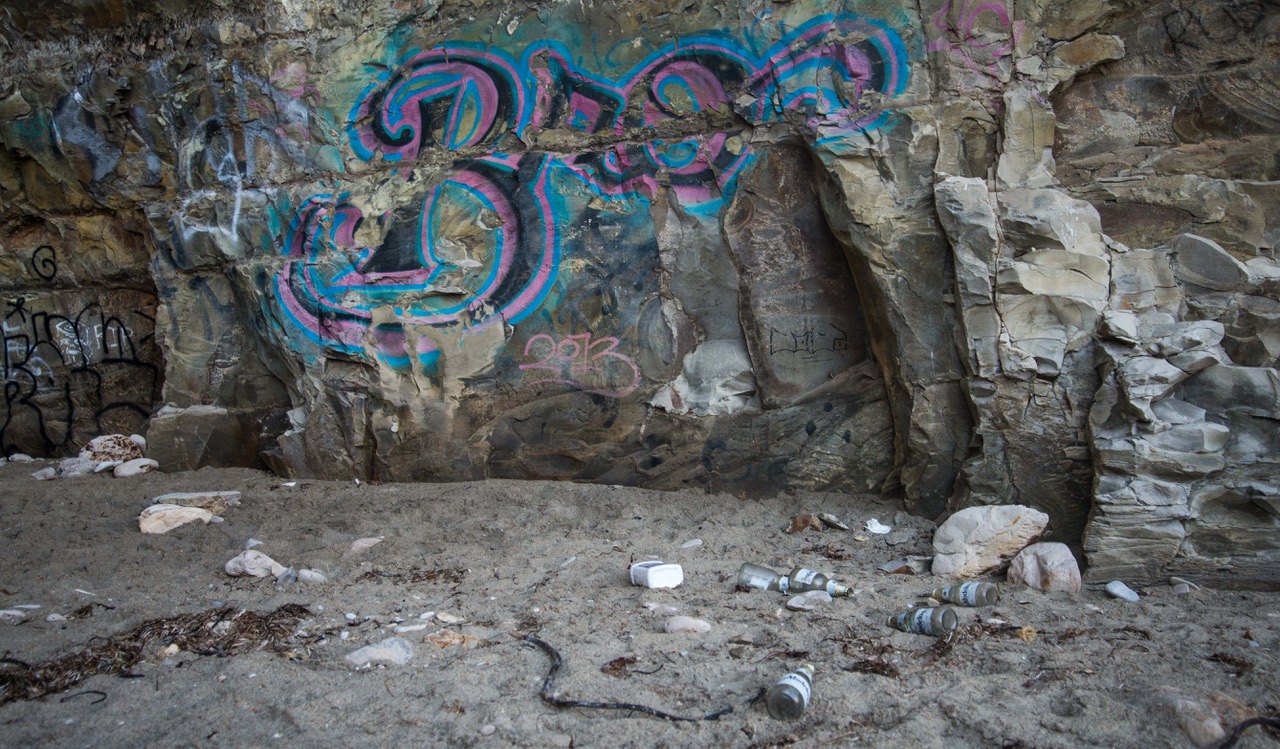 Sharktooth
Beach trash and graffiti, photo by Ted Benhari
|